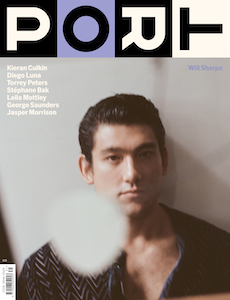The latest chapter in Hermès’ illustrious equestrian history

Thierry Hermès’ first customer was a horse. So goes the long-running joke at the eponymous French house, which first began creating harnesses and bridles in 1837. The gifted leather worker’s distinction was twofold; his deft dual needle stitching with waxed linen threads could only be done by hand, and the custom harnesses were as light, exact and respectful to the animal as possible, uncommon at the time. Soon, the family-run workshop was winning first-class accolades at Paris’ expositions universelles, as well as fielding the needs of noblemen, emperors and tsars. And, while Hermès went on to gift the world with ready-to-wear and accessory icons – the carrés silk scarf, the Birkin, the Kelly – it remains synonymous with equine élan.
No item better encapsulates both its storied past and progressive advance than the saddle. For over a century, artisans at 24 rue du Faubourg Saint-Honoré have perfected the point of osmosis between rider and beast. Today, the bespoke service begins with an expert observing the latter’s character, temperament and mobility. To harmonise the pair’s anatomy and morphology, a skeletal measurement tool then records a hundred contact points on the horse’s back. This precise, unique “footprint” will be adjusted and adapted to encourage the most natural movement, alleviating any possible tension and trauma. Crafted by a single person, each one takes roughly 30 hours to complete, and like all good design, their engineering is so intuitive they feel inevitable, almost imperceptible. Yet, how striking a Hermès saddle is, none more so the new Selle Rouge.
Oiled in the house’s emblematic colour, then anointed with glycerine soap to nourish the sustainably sourced leather, the ‘Red Saddle’ marks the sum of the atelier’s knowledge. Created for show jumping and working on the flat – informed by numerous discussions with partner rider and Belgian Olympian Jérôme Guéry – the slim fork of its tree is the result of three years of tests, with carbon losing out to the noble material of beech wood for its suppleness and shock absorbency. Illustrating that its inside is equal to its outside, its mastery is revealed through a visible interior assembly.
“Closeness, balance, stability, comfort and safety are constant challenges when designing a saddle,” notes Ly Lallier, equestrian métier director. “Thanks to a series of innovations, the Selle Rouge rises to them all… It has a deep seat, very open to ensure a comfortable position; the skirt is incorporated into the flaps and the blocks are recessed to avoid any superfluous thickness hampering movement. The single seam punctuated by backstitching in saddle-stitch, known as ‘fil-au-trait’, also avoids any unnecessary friction and contributes to its technical and aesthetic prowess.”
Émile-Maurice, the grandson of Thierry, summarised the business’ ethos in the 1920s as “leather, sport, and a tradition of refined elegance.” Much has changed since those words were uttered, but thankfully, Hermès hasn’t cantered far.
Photography Gaëtan Bernède

This article is taken from Port issue 31. To continue reading, buy the issue or subscribe here




